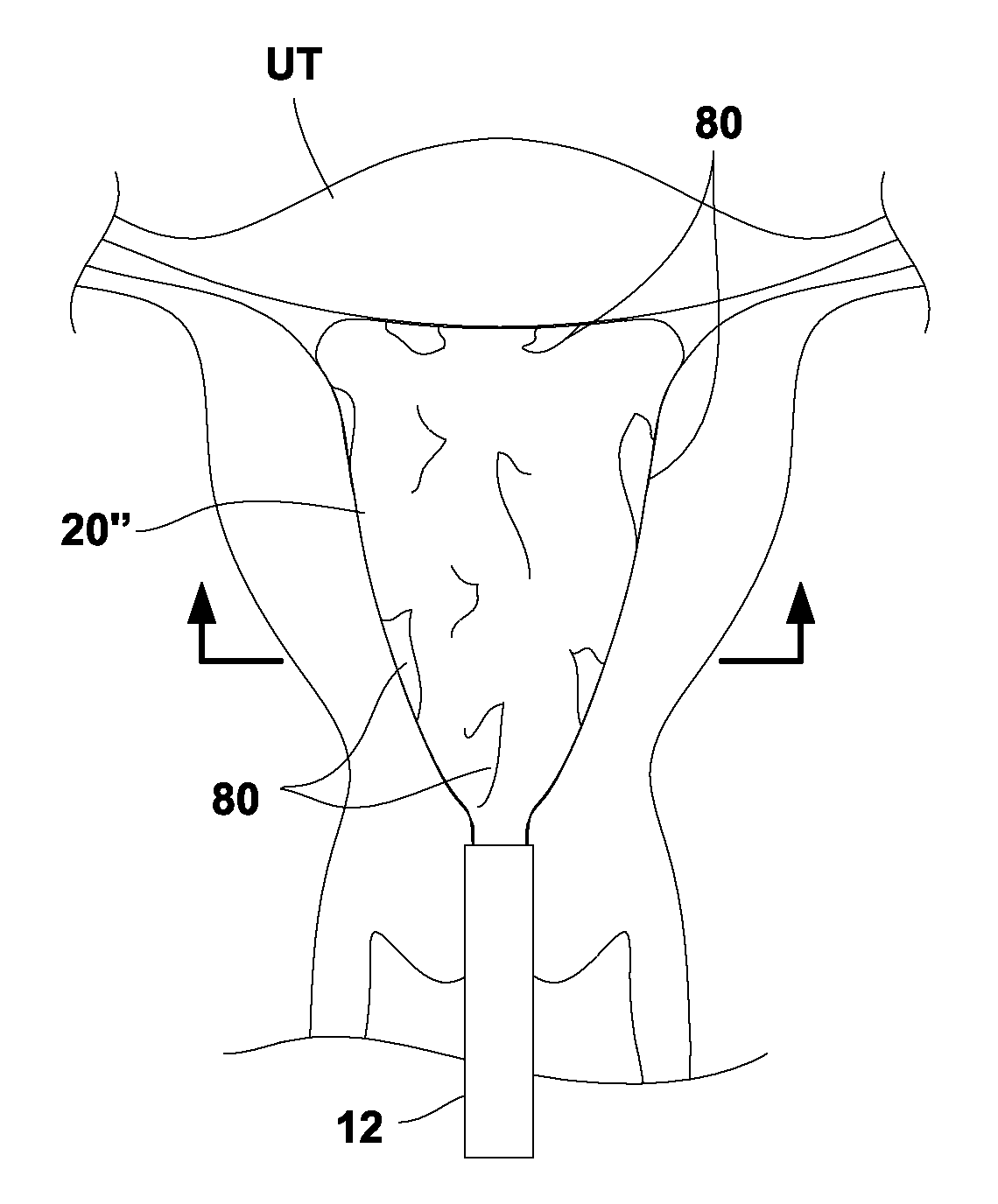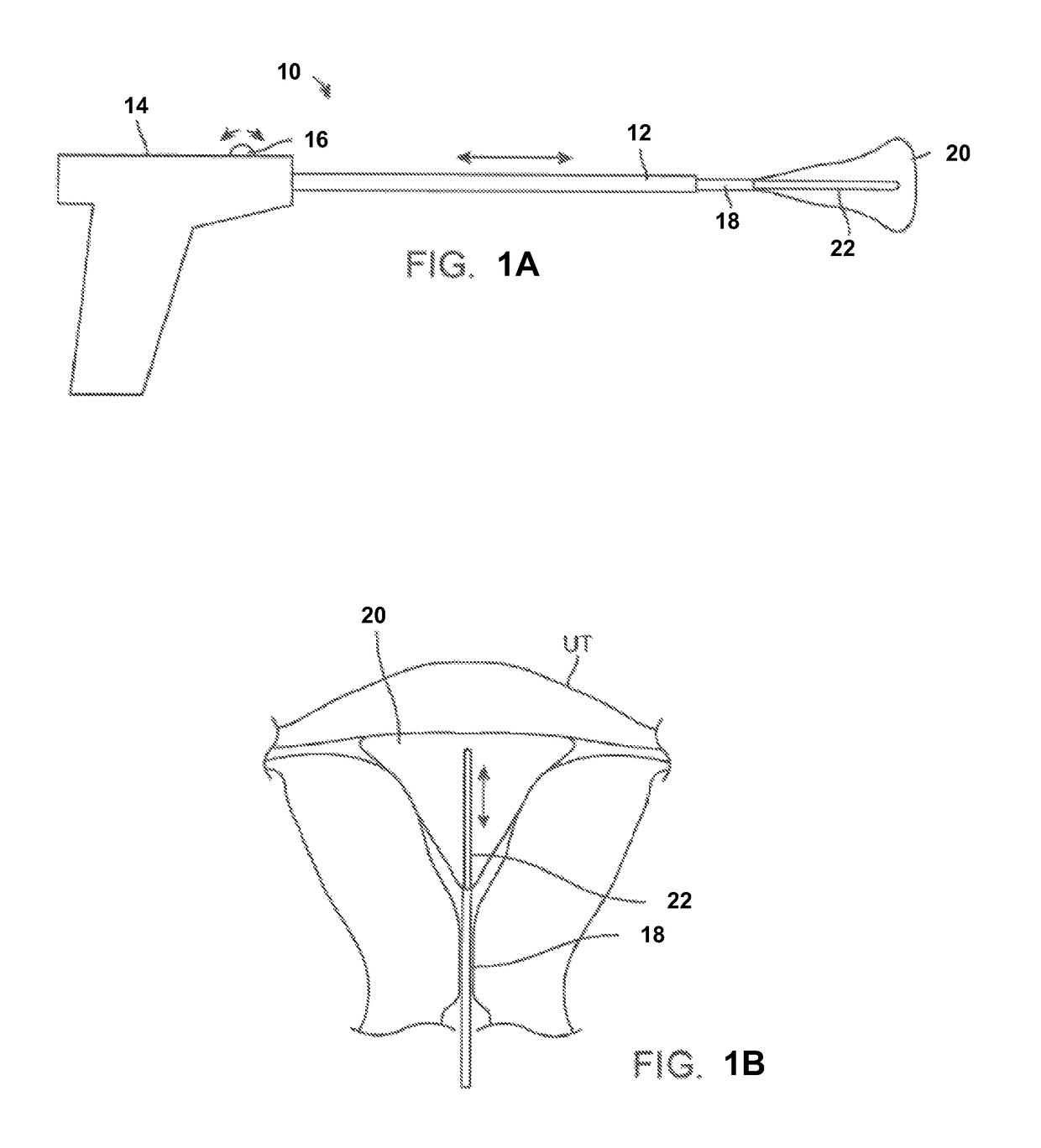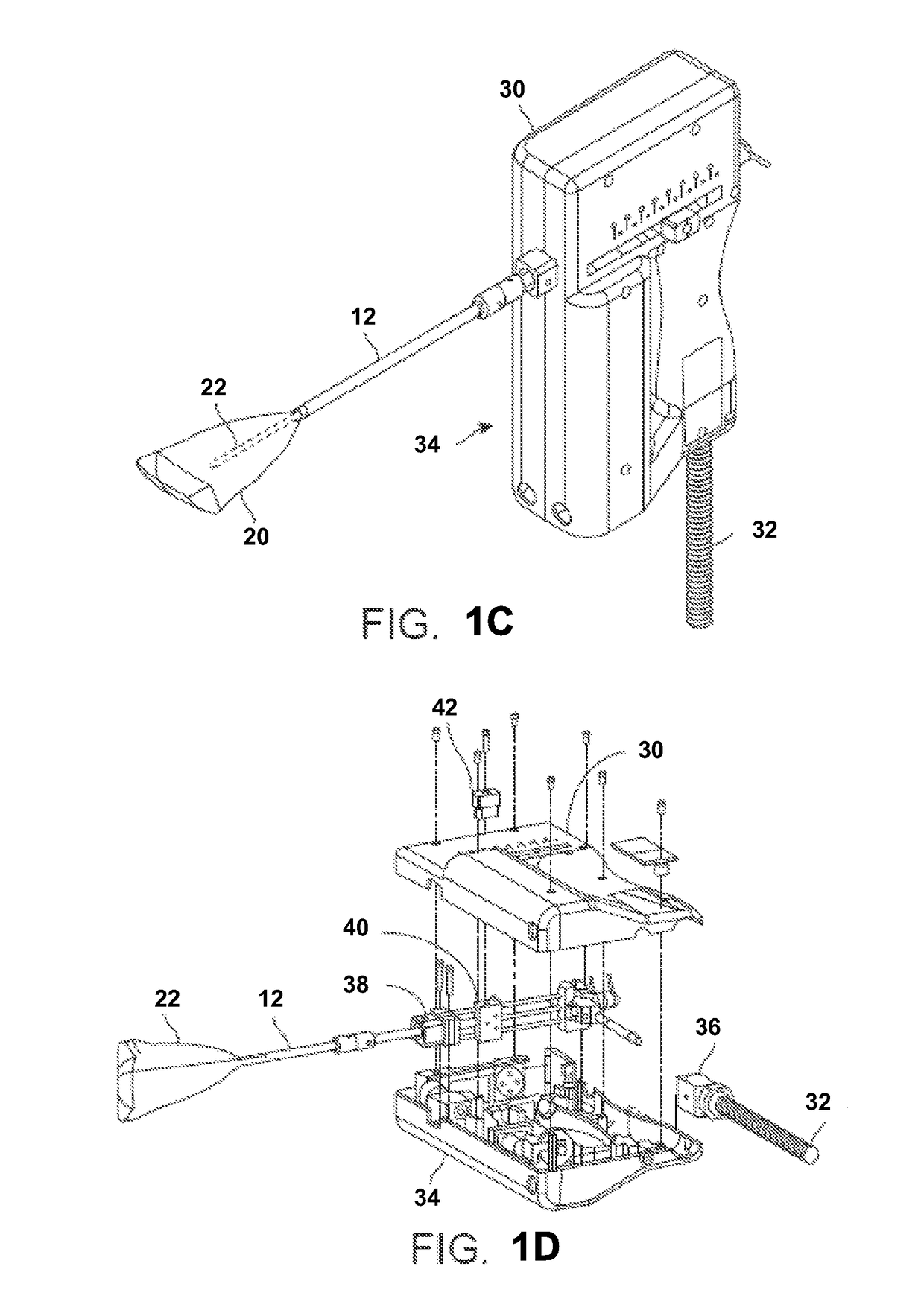Liner for cryogenic treatment systems
a cryogenic treatment system and liners technology, applied in the field of liners, can solve the problems of radiofrequency ablation, frequent lack of visualization, incomplete ablation, etc., and achieve the effect of preventing or inhibiting the fracturing or ripping of the lining
- Summary
- Abstract
- Description
- Claims
- Application Information
AI Technical Summary
Benefits of technology
Problems solved by technology
Method used
Image
Examples
Embodiment Construction
[0028]In treating an expandable and / or variably sized body lumen such as the uterus, a device generally having a cooling probe and a reconfigurable liner may be advanced within the body lumen and expanded into contact against the interior tissue surface. The liner may be configured to conform against the interior tissue surface and to resist rupture at low and high temperatures. For example, the liner when expanded may have a shape which approximates the body lumen in which it is inflated and / or come in various sizes to accommodate different patient anatomies. The liner may be formed to taper and have two rounded portions for expanding into intimate contact at the uterine cornu without painful deformation or distention of the uterus at a pressure, e.g., less than 150 mmHg.
[0029]Moreover, the liner may have a wall which is relatively thin (e.g., 0.040 in. or less) to facilitate thermal conduction through the liner material. The liner may also be sufficiently thin such that folding of...
PUM
 Login to View More
Login to View More Abstract
Description
Claims
Application Information
 Login to View More
Login to View More - R&D
- Intellectual Property
- Life Sciences
- Materials
- Tech Scout
- Unparalleled Data Quality
- Higher Quality Content
- 60% Fewer Hallucinations
Browse by: Latest US Patents, China's latest patents, Technical Efficacy Thesaurus, Application Domain, Technology Topic, Popular Technical Reports.
© 2025 PatSnap. All rights reserved.Legal|Privacy policy|Modern Slavery Act Transparency Statement|Sitemap|About US| Contact US: help@patsnap.com



